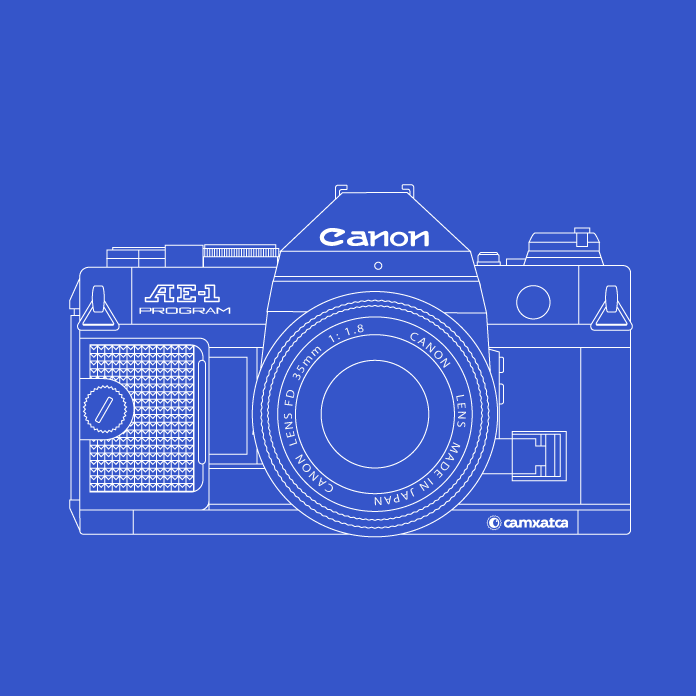
About
The Canon AE-1 Program is a 35 mm single-lens reflex camera that uses Canon’s FD mount lenses. It was introduced in 1981 as the successor to the Canon AE-1, five years after that camera’s introduction.
The major difference was the addition of the Program AE mode first seen in the A-1. This mode sets both the shutter speed and aperture automatically. Like the A-1, the AE-1 Program has a right-hand “action grip” on the front of the camera. The viewfinder uses LEDs to show information to the user.
Also like the A-1, the AE-1 Program supports interchangeable focusing screens. Unlike the A-1, though, which specifies that screens should only be changed by the factory or by experienced service technicians, those on the AE-1 Program can be changed by the user. The camera came standard with the new split/microprism screen, but seven others were available.
Unfortunately, the AE-1 Program retains the older A-series type electromagnet-controlled cloth-curtain shutter that limits top shutter speed to 1/1000 of a second, together with a rather slow flash sync speed of 1/60 second. In the years since the AE-1 Program was introduced, this shutter design has also proven to be more maintenance-intensive than modern vertical-travel metal blade designs.
The AE-1 Program features a robust build with a metal body, providing durability and stability. It boasts a through-the-lens (TTL) metering system, which measures light levels accurately and helps photographers achieve proper exposure. The camera uses a match-needle system, where the photographer adjusts the settings until the needle aligns with a designated mark, ensuring precise exposure control.
AS we said before, this camera is compatible with Canon’s FD lens mount, which allows photographers to choose from a wide selection of lenses. Some commonly used FD lenses with the AE-1 Program include the Canon FD 50mm f/1.8, a versatile standard prime lens known for its sharpness and compact size. For wider shots, photographers often opt for the Canon FD 28mm f/2.8, while the Canon FD 135mm f/2.8 serves as a telephoto lens for portraits and sports photography.
Additionally, the Canon FD 70-210mm f/4 is a popular zoom lens offering flexibility in focal lengths. It’s important to note that the AE-1 Program is also compatible with Canon’s FL lenses, although these lack certain features like automatic aperture control in program mode.
The camera features a simple and intuitive layout, with clear and accessible controls. This makes it easy for newcomers to understand and operate the camera, enabling them to focus more on their creative vision rather than technical complexities.
Additionally, the AE-1 Program is known for its affordability, making it an attractive choice for those entering the world of analog photography. It provides an excellent balance of quality and price, offering great value for the features it offers. Its reputation as a reliable and capable camera further adds to its appeal for beginners.
Furthermore, the Canon AE-1 Program has a vast community of users and enthusiasts, which contributes to its popularity. This community provides a wealth of resources, including tutorials, tips, and sample images, helping newcomers learn and improve their photography skills with this particular camera.
Note: This post was made researching information based on different websites like camerapedia, wikipedia, camera-wiki, emulsive, lomography, xataka, pintandoconluz, camaras sin fronteras and many more. On the other hand, all the photographers allowed us to post their photos on Instagram. All the illustrations are made by us and we don’t allow the use of any illustrations without permission. Finally, if you have more information or you think we made a mistake, please send us a mail.
Ver esta publicación en Instagram